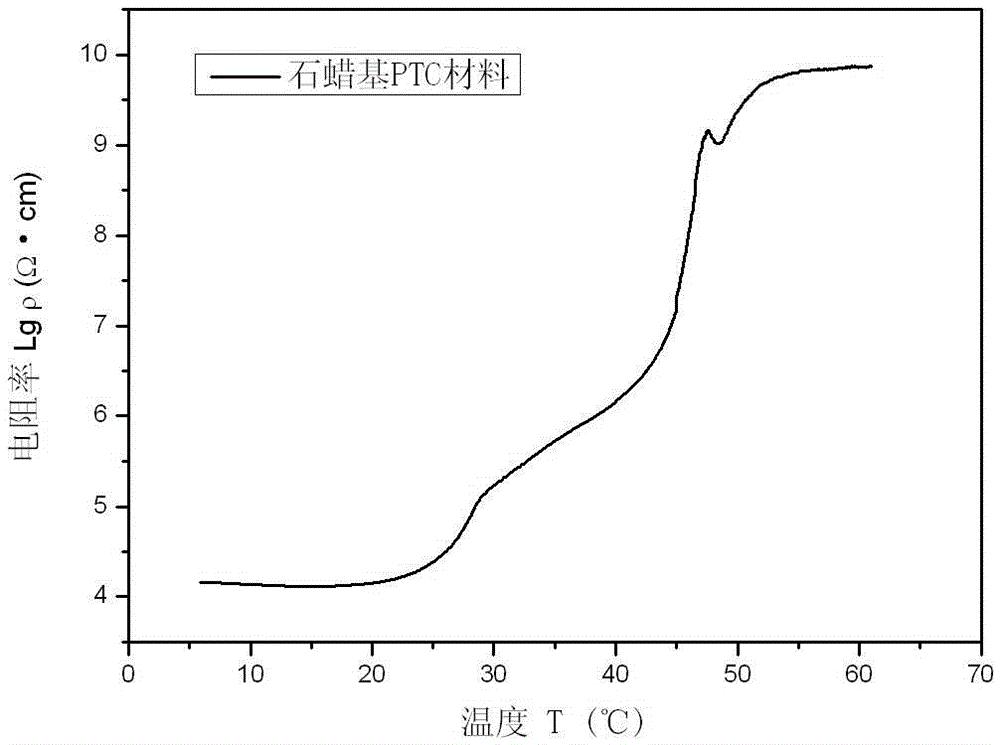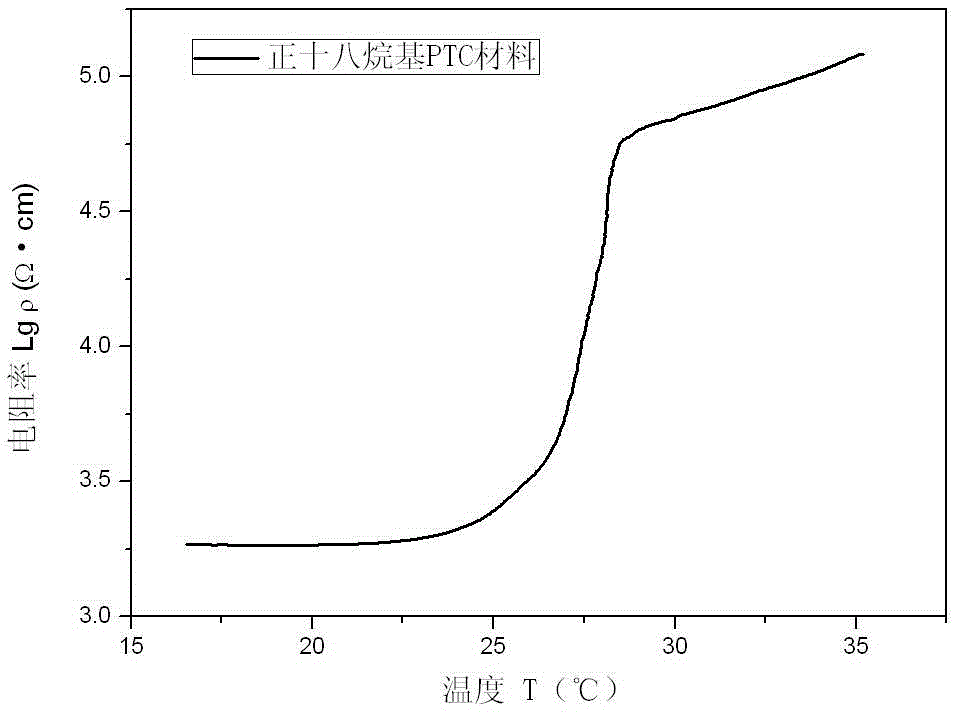Composite ptc material for thermal control at room temperature
A warm and material technology, applied in the direction of resistors with positive temperature coefficients, etc., can solve the problems of high Curie temperature of PTC materials that cannot be applied to thermal control at room temperature, low negative temperature coefficient of PTC strength, etc., to eliminate the NTC effect, high PTC strength, wide-ranging effects
- Summary
- Abstract
- Description
- Claims
- Application Information
AI Technical Summary
Problems solved by technology
Method used
Image
Examples
Embodiment 1
[0022] The specific preparation steps of the composite PTC material for thermal control at room temperature are as follows:
[0023] 1) Add 45g of low-density polyethylene (LDPE) and 105g of paraffin into the stainless steel kettle body, cover it tightly with a sealing cover, then put the stainless steel kettle body into a constant temperature oil bath, and connect the vacuum pump to the stainless steel kettle body through a rubber tube. The air inlet is used to vacuumize the inside of the kettle body, and at a temperature of 130~170°C and a speed of 60 rpm, stir and mix evenly with a digital display constant speed mixer;
[0024] 2) Then add 100g of graphite powder (GP), stir at a speed of 60 rpm at a temperature of 130~170°C under vacuum conditions, stir and mix evenly to obtain a mixture;
[0025] 3) Press the mixture into a cylinder with a diameter of 30 mm, cool it to room temperature and set it, let it stand for 24 hours, and wait for its structure to be stable to obtain...
Embodiment 2
[0031] 1) Add 45g of low-density polyethylene (LDPE) and 105g of n-octadecane into the stainless steel kettle body, cover it tightly with a sealing cover, then put the stainless steel kettle body into a constant temperature oil bath, and connect the vacuum pump to the stainless steel kettle through a rubber tube. The exhaust port of the kettle body is used to evacuate the inside of the kettle body, and the temperature is 130~170°C and the speed is 60 rpm, and the digital display constant speed mixer is used to stir and mix evenly;
[0032] 2) Then add 100g of graphite powder (GP), stir at a speed of 60 rpm at a temperature of 130~170°C under vacuum conditions, stir and mix evenly to obtain a mixture;
[0033] 3) Press the mixture into a cylinder with a diameter of 30 mm, cool to room temperature and set the shape, and let it stand for 24 hours until the structure is stable to obtain a rod-shaped n-octadecyl composite PTC material; cut and polish with special tools , processed ...
Embodiment 3
[0039] 1) Add 36g of low-density polyethylene (LDPE) and 144g of n-eicosane into the stainless steel kettle body, cover it tightly with a sealing cover, then put the stainless steel kettle body into a constant temperature oil bath, and connect the vacuum pump to the stainless steel kettle through a rubber tube. The exhaust port of the kettle body is used to evacuate the inside of the kettle body, and the temperature is 130~170°C and the speed is 60 rpm, and the digital display constant speed mixer is used to stir and mix evenly;
[0040] 2) Then add 60g of carbon black (CB), stir at a speed of 60 rpm at a temperature of 130~170°C under vacuum conditions, stir and mix evenly to obtain a mixture;
[0041] 3) Press the mixture into a cylinder with a diameter of 30 mm, cool it to room temperature and set it, let it stand for 24 hours, and wait for its structure to be stable to obtain a rod-shaped n-eicosyl composite PTC material; cut and polish it with a special tool , processed i...
PUM
| Property | Measurement | Unit |
|---|---|---|
| density | aaaaa | aaaaa |
| Curie point | aaaaa | aaaaa |
| Curie point | aaaaa | aaaaa |
Abstract
Description
Claims
Application Information
 Login to View More
Login to View More - R&D
- Intellectual Property
- Life Sciences
- Materials
- Tech Scout
- Unparalleled Data Quality
- Higher Quality Content
- 60% Fewer Hallucinations
Browse by: Latest US Patents, China's latest patents, Technical Efficacy Thesaurus, Application Domain, Technology Topic, Popular Technical Reports.
© 2025 PatSnap. All rights reserved.Legal|Privacy policy|Modern Slavery Act Transparency Statement|Sitemap|About US| Contact US: help@patsnap.com



